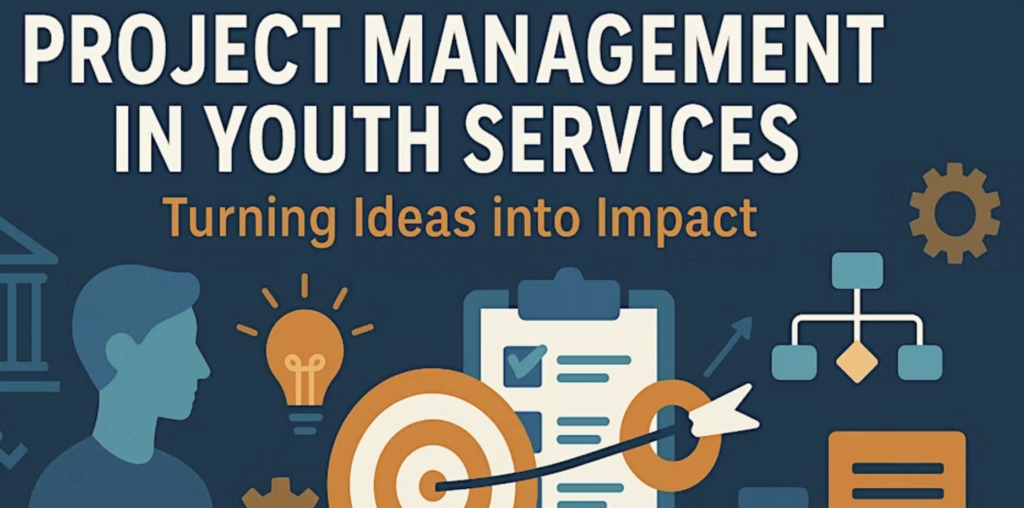Why is Project Management the Missing Link in Youth Services?
Posted in Announcements News | Tagged Change, Collaboration, Ideas, Impact, Project Management, Sustainable, Workshop, Youth Services, Youth-Justice
Turning Ideas into Impact through Structure, Strategy, and Shared Purpose
In youth services, even the most innovative, promising ideas can stall without the structure, clarity, and stakeholder buy-in to bring them to life. Whether you’re coordinating diversion programs, improving service delivery, or launching cross-agency initiatives, effective project management provides the foundation for sustainable change.
Project management tools not only keep initiatives on track, but also align diverse stakeholders, clarify roles, and embed accountability, ensuring your work drives real impact, even if you’re not the final decision-maker.

Understanding Cross-System Collaboration in Youth Services
Youth-serving systems are inherently complex. Juvenile courts, probation departments, child welfare agencies, schools, behavioral health providers, and community-based organizations all operate with different mandates, funding streams, and priorities. These silos can result in service gaps, duplicated efforts, and missed opportunities for young people and their families.
When agencies come together around a shared vision, align strategies, and co-design solutions with their partners (including youth and families), they can drive transformational change. This level of collaboration, however, doesn’t happen organically. It requires structure, shared tools, and disciplined follow-through.

How Core Project Management Practices Strengthen Collaboration
Clarify the What, Why, and How with Logic Models.
Logic models provide a visual roadmap showing how your resources and activities will lead to desired outcomes. They give your initiative a common language, making your theory of change visible and measurable. Logic models help stakeholders align around a shared strategy through every phase of implementation.
Make Goals Actionable with SMART Objectives.
Vague objectives become actionable when reframed as SMART goals—Specific, Measurable, Achievable, Relevant, and Time‑Bound. For example, “improving diversion” is a good starting point, but it is vague. How do you define “improving,” and how will you know when you’ve “succeeded”? SMART goals make these vague intentions measurable and achievable, setting a clear target and benchmarks for evaluating progress.
Anticipate Challenges with a Premortem.
What could go wrong, and how will you prepare? A premortem is a proactive exercise that helps you imagine a future failure, then reverse-engineer the causes. It creates a safe space to surface hidden risks and prepare for them in advance. In youth services, where unexpected barriers are the norm, this risk mitigation technique can make all the difference.
Engage the Right People with Stakeholder Mapping.
Not every stakeholder needs the same level of involvement. Stakeholder mapping allows you to identify key players, influencers, skeptics, and champions so you can tailor communication strategies to keep each group informed, engaged, and satisfied. It is a practical way to ensure no critical voice is overlooked, and that your champions are empowered to lead.
Want to Learn More?

These tools are just the starting point. Ready to put these strategies into practice? Our upcoming workshop, “Project Management in Youth Services: Turning Ideas into Impact,” will guide you through these tools step‑by‑step, helping you create logic models, identify SMART goals, map your stakeholders, anticipate risks, and establish feedback‑driven processes. Join us to turn your vision into lasting change.
Sign up on the Project Management Registration Page. Ahead of the workshop, the CYJ team will follow up with a Zoom link and additional information for all registrants.
